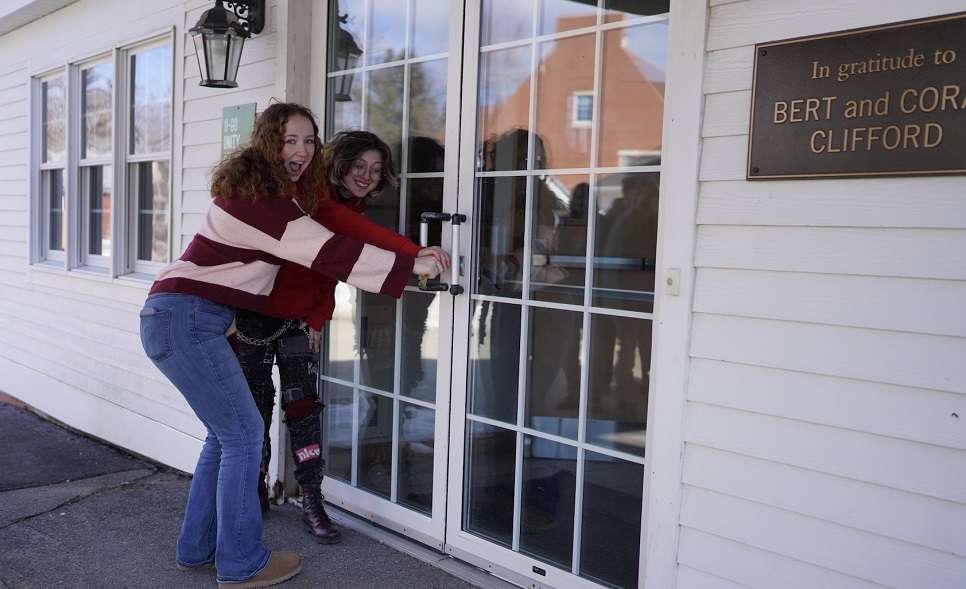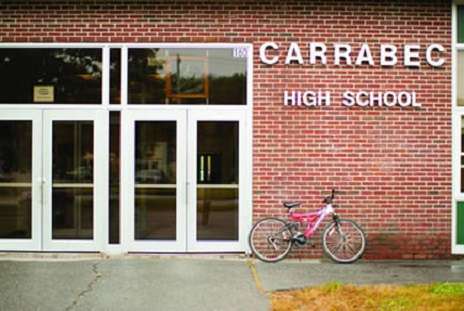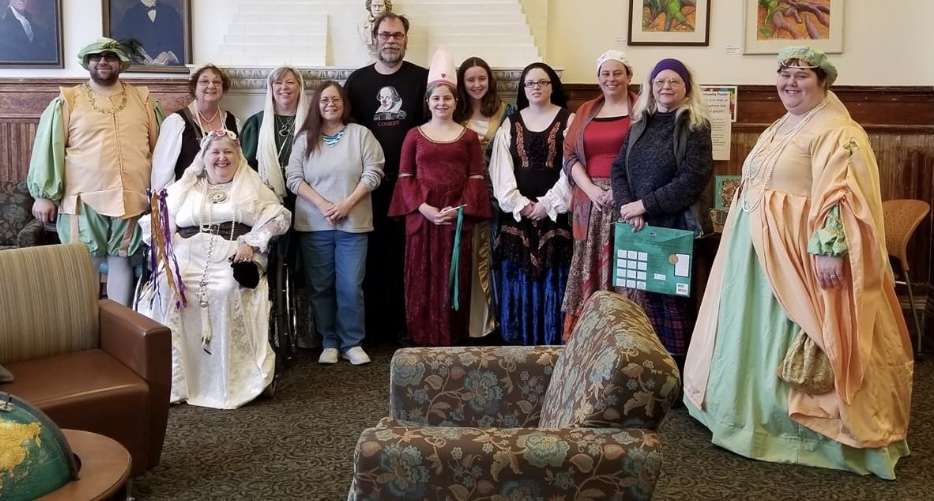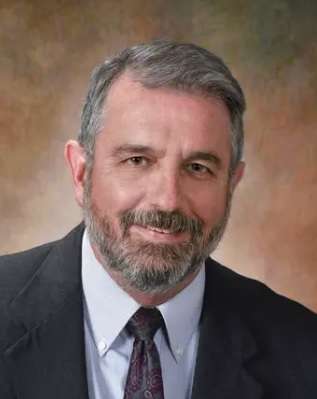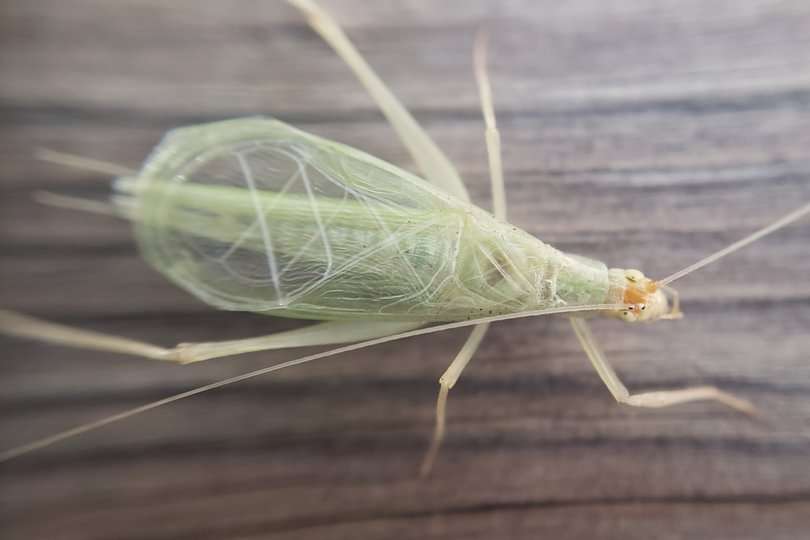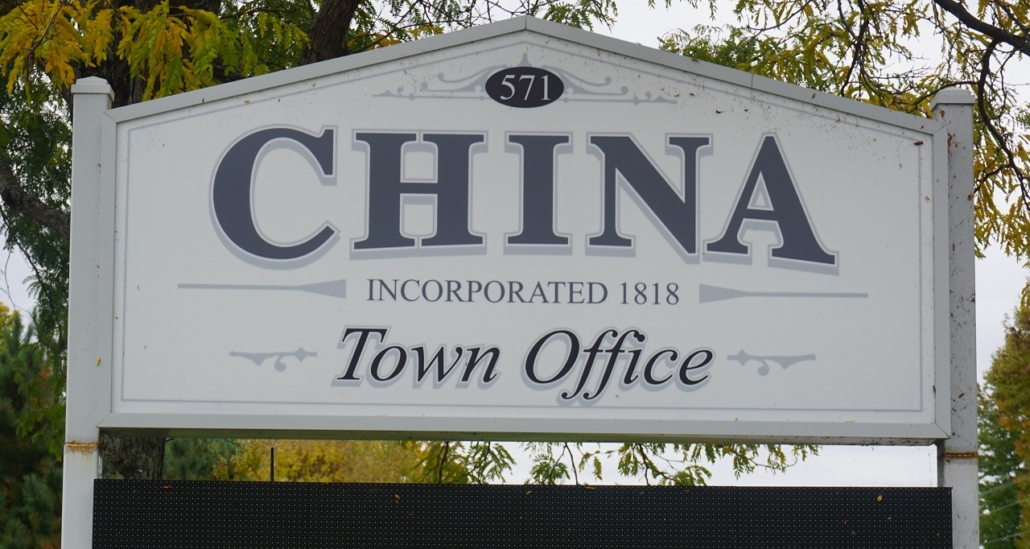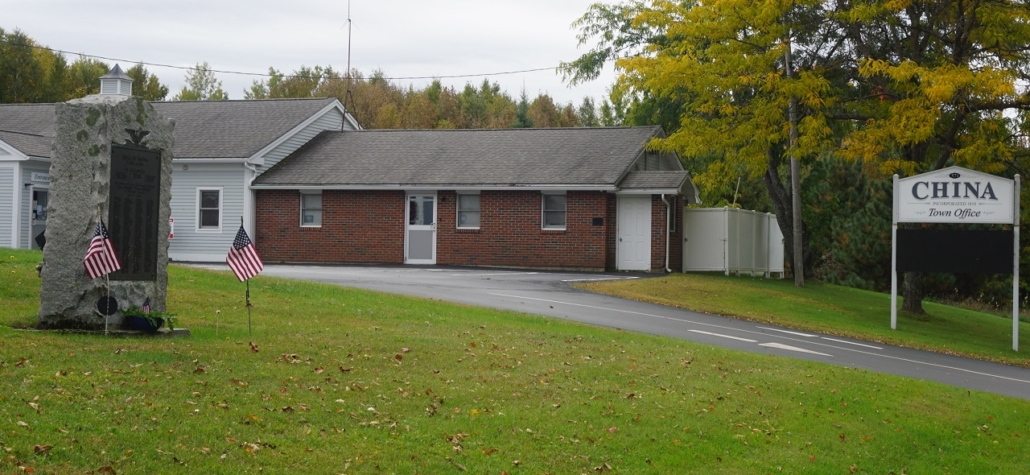ANNE R. PALMER
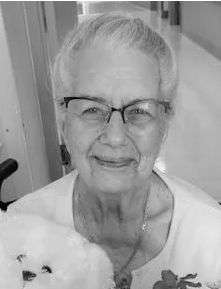 WATERVILLE – Anne Richards Palmer, 90, died Monday, March 25, 2024, at Alfond Center for Health, in Augusta. Anne was born August 15, 1933, in Chillicothe, Missouri, to Arline Richards Copple Marks and Laverne G. Copple. Her adopted father was Nathaniel Burbank.
WATERVILLE – Anne Richards Palmer, 90, died Monday, March 25, 2024, at Alfond Center for Health, in Augusta. Anne was born August 15, 1933, in Chillicothe, Missouri, to Arline Richards Copple Marks and Laverne G. Copple. Her adopted father was Nathaniel Burbank.
She grew up in Waterville with her grandparents, Hattie and Jess Richards, graduated from Waterville High School in 1951 and then enrolled in Colby College, in Waterville, from which she graduated in 1955.
On Valentine’s Day, February 14, 1957, Anne married David Richardson Palmer and they moved to Miami, Florida, and had two children, Todd Richards Palmer and Laurie Anne Palmer. In 1972, the family moved back to Waterville.
Anne went back to college and graduated from University of Maine at Augusta with a BA in nursing. She had a successful career with MaineGeneral Medical Center in nursing. After retirement, she worked in the office at Waterville Burger Corporation, the family’s Burger King franchise.
Anne devoted more than 20 years to serving on the Waterville Planning Board and Zoning Board of Appeals while championing many community service projects, including the North Street Playground, also known as the Morton A. Brody Playground; South End Skate Park, the city’s first skate park; and the purchase of a new rescue ambulance for the Waterville Fire Department. She single-handedly raised funds for these projects, applying for grants and seeking donations. She donated money left over from the skate park fundraising effort to help improve Moor Street Park, in the South End. She also helped raise funds for the Humane Society Waterville Area’s new animal shelter, on Webb Road, and worked diligently to help restore the Blueberry Hill lookout site, in Belgrade.
Mom was a wonderful mother, friend and nurse who brought out and demanded the best in everyone. She set the bar high and was a champion when called upon. She left a big footprint in the Waterville community and will be missed and loved forever.
A celebration of life will be held at Colby College Alumni House on Saturday, April 27, 2024, from 2 – 4 p.m.
Arrangements are in the care of Lawry Brothers Funeral Home, 107 Main St., Fairfield where memories may be shared, and an online register book signed by visiting http://www.lawrybrothers.com.
In lieu of flowers, donations may be made to Humane Society Waterville Area, 100 Webb Road, Waterville, ME 04901 or online at http://www.hswa.org.
MADELINE C. DOUGHTY
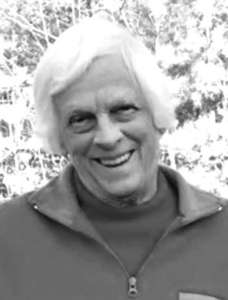 SIDNEY – Madeline C. Doughty, 82, of West Gardiner, passed away on Monday, March 25, 2024, at Bella Point, Sidney. She was born in Gardiner, on July 1, 1941, to Aubert and Marguerite (Welsh) Phillis.
SIDNEY – Madeline C. Doughty, 82, of West Gardiner, passed away on Monday, March 25, 2024, at Bella Point, Sidney. She was born in Gardiner, on July 1, 1941, to Aubert and Marguerite (Welsh) Phillis.
On June 24, 1961, she married the love of her life, Gordon Doughty. Madeline worked at Lipman’s Poultry and the Kennebec Journal, both in Augusta, for years. Then she became a childcare provider, housekeeper, and worked at Fuller’s Market.
She was a member of Winter Street Baptist Church which she attended for many years. She faithfully read her Bible every morning. Some of her hobbies included word searches, puzzles, card games, going for a drive, and eating out. She loved helping out others. When she saw her loved ones happy it brought her immense joy.
She was such an amazing woman; sweet, generous, kindhearted, and selfless.
She was predeceased by her parents, husband, Gordon Doughty, brother, Spike Phillis, and sister, Toni St. Peter.
Madeline is survived by her daughters, Debbie Doughty, of Tucker, Georgia, and Jackie Hyde and her husband, Steve, of West Gardiner; four grandchildren, Sarah Farnsworth and her husband, Tyler; Samantha Garland and her husband, Ricky; Jerica Hyde, and Diamond Doughty; great-grandchildren, Lucas, Briella, Tyson, Isaiah, Riley, and Maya; brother, George Phillis, Sr.; sisters, Ann Dutil and Sheila Smith.
The family is filled with so much gratitude Funeral services will be held at 10:30 a.m., on Saturday, May 18, at Winter Street Baptist Church, 32 Winter St., in Gardiner. A celebration of life will follow.
Arrangements and guidance are entrusted with Staples Funeral Home and Cremation Care, 53 Brunswick Avenue, Gardiner, Maine.
Condolences, memories, and photos may be shared with the family on the obituary page of the Staples Funeral Home website, http://www.staplesfuneralhome.com.
CARL L. BECK
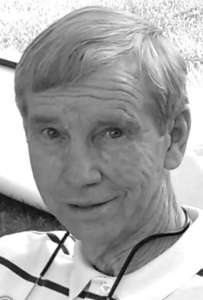 BELGRADE – Carl Linwood Beck, 78, of Belgrade, passed away peacefully in the comfort of his home on Tuesday, March 26, 2024, four weeks after experiencing a debilitating stroke. Carl was born on April 2, 1945, in Honolulu, Hawai’i, where his father, Linwood, was stationed at Pearl Harbor with his wife, Mary.
BELGRADE – Carl Linwood Beck, 78, of Belgrade, passed away peacefully in the comfort of his home on Tuesday, March 26, 2024, four weeks after experiencing a debilitating stroke. Carl was born on April 2, 1945, in Honolulu, Hawai’i, where his father, Linwood, was stationed at Pearl Harbor with his wife, Mary.
As was always his way, he fought with relentless determination right up until the end, maintaining hope and mental fortitude even as his body said no more.
Carl was a man who prided himself in caring for everyone around him, positively impacting the lives of so many. Whether loving his friends and family, giving back to the community, or supporting his employees, you could always count on Carl to be there for you.
As the first born, Carl quickly became the de facto leader of the family, with his siblings Cyndi, Doug and Bruce looking up to him and seeking guidance through their youth and into adulthood. Growing up in Waterville’s Roosevelt Avenue neighborhood, Carl’s boundless charisma and huge heart drew people to him, creating life-long friendships with the finest of people, many of whom were to become pillars of the Central Maine community. His countless hours playing basketball at the Boy’s Club and caddying at the country club opened doors to what were to become his deepest of friendships.
He never was one to shy away from work, finding himself on construction sites at a young age with his grandfather Carl, his father, and Uncle Waldo. His tireless work ethic spurred him to become a top scholar and stand-out athlete at Waterville High School. He later became the first in his family to attend college, graduating from the University of New Hampshire with top honors, and then obtaining his MBA and CPA from Boston University. He went on to work in the prestigious accounting firm of Arthur Young, in Portland, quickly obtaining status as their top junior associate. Despite this success, in 1975, Carl was drawn back to Central Maine. He recognized an opportunity to grow the family business. His hard work and business acumen injected new life, setting the stage for decades of success that continue to this day. He was so very proud to be an integral part of C.O. Beck and Sons celebrating 100 years of service in 2020.
A transformative year for Carl was 1979, meeting his soon-to-be wife, Sally, and her son, Steven. Carl and Sally eloped to Bermuda in June of that year. Sadly, months later, Carl was diagnosed with Lymphoma. Given only a 20 percent chance of survival, he forged on, battling through months of intensive cancer treatments. He beat it, as he would do four more times, including serious neck/throat cancer in 2009. His resolve was tested over and over, but he never relented.
Carl dedicated his life to supporting those around him, never shying away from being there for his family, friends, and community. Whether it was supporting Sally and Steve’s demanding sports schedules and their higher-education, building his dream-house, managing the finances of friends and employees, or donating his time and resources to charitable organizations, Carl always found the time.
In recent years, he was tireless in his commitment to Sally in her ongoing battle with Parkinson’s, ensuring she could continue to pursue the many activities that brought her joy. The pride he had for his family was beyond words, capped off by a special Christmas this past year shared with his wife, son and grandson, Francis. Carl was overcome with love and joy.
Outside of being there for his family and friends, attending big sporting events was Carl’s passion. He snuck into the Master’s with Gubby in the ’60s, took his young son to countless Boston Celtics games in the ’80s, went to Arnie’s (Arnold Palmer) last U.S. Open, at Oakmont, attended the British Open, at St. Andrews, with Sally, and was on the parquet with his best friend, Chip, for the Celtics last game at the old Garden.
Carl went for it, creating the best of memories with his loved ones.
It’s rare that we are blessed with the opportunity to share in the life of someone as special as Carl Beck. He has left behind a void that cannot be filled.
Carl is survived by his wife, Sally Beck, of Belgrade; son, Steve Hildreth and his partner Andrea Smith, of Chelsea; grandson, Francis Hildreth Pedrero, of Barcelona, Spain; sister and brother-in-law, Cyndi and Craig Warren, of New Gloucester; brothers, Doug Beck, of Rome, Bruce and Peggy Beck, of China; and many nieces and nephews in Maine and throughout the country.
He was predeceased by his mother and father, Mary and Linwood Beck; and his brother, Brian Beck.
A celebration of life will be held at the Loon Cove common area, in Belgrade, on Friday, July 19, at 3 p.m., 125 Loon Call Drive – arrival by boat welcome.
Arrangements are under the care and direction of Veilleux and Redington Funeral Home.
Those interested in honoring the life of Carl can make donations to the Michael J. Fox Foundation for Parkinson’s Research in his memory.
LELAND M. BESSEY
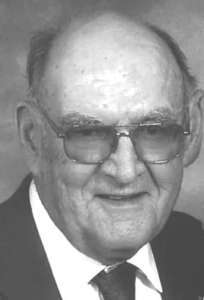 ALBION – Leland M. Bessey, 96, passed away on Saturday, March 30, 2024, following a brief period of declning health. He was the son of Clarence and Alice Bessey.
ALBION – Leland M. Bessey, 96, passed away on Saturday, March 30, 2024, following a brief period of declning health. He was the son of Clarence and Alice Bessey.
He was a lifelong resident of Albion.
Leland was a veteran, having served in the U.S. Army in World War II. Upon his return, he attended and graduated from Thomas College, in Waterville, where he met fellow student Donna Andrews. Shortly after their graduation, they were married. Their beautiful love affair spanned more than 74 years together.
He and Donna were dairy farmers for several years early in their marriage. They both had fond memories of the farm and their labor of love tending to their cows. Later, he became a rural route carrier for the U.S. Postal Service, and in 1984 was appointed postmaster, in Albion.
Leland was a fixture in Albion, providing more than 27 years of service to his community as a Postal Service employee, selectman, Albion Volunteer Fire Dept. member, and Boy Scout local committee member. When there was a meeting in Albion, Leland was in attendance and often in a leadership role. He loved his community, and they clearly loved him. His sense of duty and service was deeply ingrained.
A man of many passions and abilities, Leland and Donna’s home boasted his talents as a workman. When they built the home 50 years ago, Leland designed and created the cabinets, and was responsible for many of the finishing details, plumbing and electricity. He also crafted many pieces of furniture for them.
One year, he built a Grandfather clock for Donna as a surprise!
Leland had a small plane for many years and created an airstrip with his cousin, Jimmy. They enjoyed many years of flying the skies together.
Leland enjoyed restoring antique tractors, especially Farmall. He was an avid outdoorsman, enjoying gardening, hunting, fishing, snowmobiling, and maple syrup tapping and processing over many years.
He was a member of Kennebec River Rovers Good Sam RV Club for many years and served as its president. He and Donna loved to take their travel trailer and “hit the road” with friends to travel the United States together. In their later years, they spent half of the year in Bushnell, Florida, enjoying their retirement with friends from Maine and elsewhere. He was also a member of Fairfield United Methodist Church.
The consummate, caring gentleman, Leland was a role model and mentor for many who knew him. His playfulness and sense of humor was a side of Leland that was especially loved by younger family members.
He is survived by his wife, Donna; sister Evelyn; and several nieces and nephews.
He was predeceased by his sister, Mary.
A spring graveside service and celebration of life for Leland will be announced at a later date.
Arrangements are in the care of Lawry Brothers Funeral Home, 107 Main St., Fairfield where memories may be shared, and an online register book signed by visiting http://www.lawrybrothers.com.
CHARLES N. PELLETIER
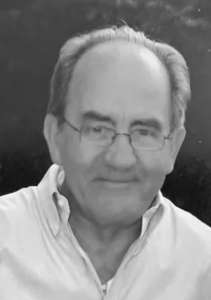 WINSLOW – Charles Nelson Pelletier, 89, of Winslow, died following a brief illness at MaineGeneral Medical Center, in Augusta, on Monday, April 1, 2024. He was born on September 6, 1934, the son of Charles and Laura (Gauvin) Pelletier.
WINSLOW – Charles Nelson Pelletier, 89, of Winslow, died following a brief illness at MaineGeneral Medical Center, in Augusta, on Monday, April 1, 2024. He was born on September 6, 1934, the son of Charles and Laura (Gauvin) Pelletier.
He graduated from Fort Kent schools in 1952 followed by his military service in the United States Army. He was employed and retired from Better Cable TV, in Winslow, after 26 years of service.
He was a lifetime member of MacCrilllis-Rousseau VFW Post #8835, in Winslow. Throughout his retirement, he enjoyed wintering in Florida and attending any and all family gatherings.
He was devoted to his family and his faith. His favorite pastimes were spending time with family, taking daily walks, and cheering on his children, grandchildren, and great-grandchildren at various events.
He is survived by his wife of 65 years, Noella; his children Marc Pelletier (Ann), Gary Pelletier (Janet), Gail Malone (John); many grandchildren, great-grandchildren; a sister, Una Mae Lord; as well as nieces, and nephews.
He was predeceased by a daughter Rita Marie at birth, his parents and a sister, Yvette, as well as two brothers, Warren, and Clifford.
A Mass of Christian burial was celebrated on Saturday, April 6, 2024, at Notre Dame Catholic Church, 116 Silver Street, Waterville.
Arrangements are under the direction and care of Gallant Funeral Home, 10 Elm Street, Waterville. An online guestbook may be signed, condolences and memories shared, at www.gallantfh.com.
In lieu of flowers, donations may be made to St. John Food Pantry, 17 South Garand Street, Winslow, ME 04901.
ARTHUR P. PELLERIN
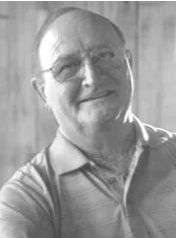 WINSLOW – Arthur P. Pellerin, 82, lifelong resident of Winslow, passed away peacefully on Monday, April 1, 2024, at MaineGeneral Medical Center, in Augusta. Arthur was born on October 2, 1941, in Winslow, son of Arthur M. and Juliette (St. Amand) Pellerin.
WINSLOW – Arthur P. Pellerin, 82, lifelong resident of Winslow, passed away peacefully on Monday, April 1, 2024, at MaineGeneral Medical Center, in Augusta. Arthur was born on October 2, 1941, in Winslow, son of Arthur M. and Juliette (St. Amand) Pellerin.
Arthur served Central Maine’s farming community for 58 years beginning with Eastern States, retiring from Feed Commodities Inc., in 2017. His farmer friends were like family to him. He was a lifelong parishioner of St. John Parish, in Winslow.
He was predeceased by both his parents, and siblings Evangeline, Esther, Ann, and Frederick.
Arthur is survived by Sandra, his wife of nearly 62 years; his five children, Rachel (Erich), David (Rachel), Sarah, Daniel, and Peter; along with 11 grandchildren and three great-grandchildren.
A funeral mass will be held Saturday, April 13, 2024, at 11 a.m., at St. John Church, 26 Monument Street, Winslow, Maine. Celebration immediately following in St. John Church Hall.
Please visit Arthur’s memorial page at https://dsfuneral.com/obituaries/arthur-pellerin for additional information and detailed obituary as written by Arthur Pellerin.
In lieu of flowers, Arthur would love to know you spent time with your loved ones.
YVONNE N. GRANT
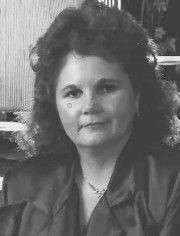 WATERVILLE – Yvonne Nelson Grant, 76, of Waterville, passed away on Monday, April 1, 2024. She was born on October 17, 1947, in Lincoln.
WATERVILLE – Yvonne Nelson Grant, 76, of Waterville, passed away on Monday, April 1, 2024. She was born on October 17, 1947, in Lincoln.
She will forever be remembered for her generosity, warmth, and unwavering love, which extended to her passions for gardening, judging flower shows, animal rescue, travel, and shopping. Her dedication to nurturing gardens and rescuing animals exemplified her compassionate spirit. Though her presence may be gone, her legacy of love and service will continue to bloom and thrive. Rest in peace, Yvonne, your memory will forever be cherished.
Yvonne was predeceased by husband, Thomas Grant, son, Brett Drouin, her parents Richard Nelson, Katherine (Babineau Nelson) Gerry, and stepfather Louis Gerry.
She is survived by her brother Randolph Gerry and wife Barbara, of Winslow; nieces Michelle Gerry, of Scarborough, and Jodi Poulin and her husband Chad and their children Cole and Caitlin, of Colorado.
There will be no services at this time.
Arrangements are in the care of Wheeler Funeral Home, 26 Church Street, Oakland where memories may be shared, and an online register book signed by visiting http://www.lawrybrothers.com.
In lieu of flowers, donations can be made to the Humane Society Waterville Area., 100 Webb Rd., Waterville,ME 04901.
EDWARD H. BOUDREAU SR.
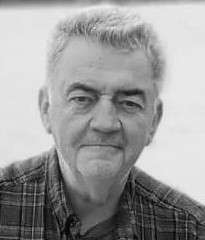 BELGRADE – Edward Henry Boudreau Sr., 79, passed away unexpectedly, at his home in Belgrade, on Tuesday, April 2, 2024. He was born on February 19, 1945, a son of Frederick and Cecile (Veilleux) Boudreau.
BELGRADE – Edward Henry Boudreau Sr., 79, passed away unexpectedly, at his home in Belgrade, on Tuesday, April 2, 2024. He was born on February 19, 1945, a son of Frederick and Cecile (Veilleux) Boudreau.
Ed grew up in Bath and was a graduate of Morse High School in the class of 1963. He went on to further his education by attending the University of Maine, and ultimately graduated from Bentley University with a bachelor’s degree.
Following school, he became a father and his career which led to an impressive career at EJ Prescott, in Augusta, where over a 30-year span he helped guide the company through periods of recession and grow the organization until his retirement in 2018. He retired as the Financial Vice President and Treasurer after 41 years of employment.
Ed was the epitome of a hard-working man and took pride in providing for and spending time with his family.
In November 2002, he married the love of his life, Carole Cyr. Together, they were happy to raise their family and have the opportunity to travel. One of his most treasured trips was to Europe visiting the Holy Land, a life-changing experience for both of them.
Ed was a communicant of St. Michael’s Parish, in Augusta, a member of the Benevolent and Protective Order of Elks Augusta Lodge #964, and a lifetime member of Le Club Calumet, also in Augusta.
Ed enjoyed taking his dog Axel for a daily car ride enjoying a hotdog or ice cream. Above all, Ed was a family man who will be remembered for his kind heart and being a true gentleman.
He was predeceased by his parents and siblings, Marguerite Boudreau and William Boudreau.
He is survived by his wife, Carole Boudreau, their children, Tina Forbes and partner Robert Moore, June Powell and partner Marcel Schnee, Edward Boudreau, Jr. and partner Missy Knox, Julie Hayes and fiancé Clarence Levesque and Chris Powell and partner Andrea Shea; grandchildren, Ashley, Dexter, Juston, Dillon, Tyler, Ethan, Haylana, Rebecca, Eli, and Tiaunna; one great-granddaughter, Alzena; as well as his sister, Mary Baspeyre; and nieces and nephews.
A Mass of Christian Burial was held on Tuesday, April 9, at St. Augustine Catholic Church, 75 Northern Ave., Augusta, Maine 04330. Ed’s burial will take place in the spring.
Condolences, stories, or photos may be shared by visiting http://www.plummerfh.com.
In lieu of flowers, memorial contributions may be made to Augusta Elks Lodge #964 Scholarship Fund, 397 Civic Center Dr., Augusta, ME 04330.
REGINA G. RANCOURT
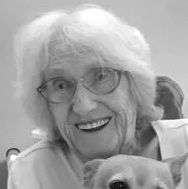 WINSLOW / WATERVILLE – Regina G. Rancourt, 97, passed away peacefully. Regina was born in Waterville on November 2, 1926, daughter of Clifford J. and Flossy F. (Poulin) Quirion.
WINSLOW / WATERVILLE – Regina G. Rancourt, 97, passed away peacefully. Regina was born in Waterville on November 2, 1926, daughter of Clifford J. and Flossy F. (Poulin) Quirion.
She attended school in Winslow. At an early age during the war, she worked as a welder at BIW. She has held other various positions including woolen mills, C. F. Hathaway Shirt Co., and Keyes Fibre Co. (Huhtamaki), both in Waterville, from which she retired.
Regina was outgoing, well loved, and devoted to her family. She enjoyed crocheting, houseplants, gardening, crafts, and dogs. She loved cooking and spending time with her family. She relished her time shopping and socializing. She was a wonderful, caring person and will be missed.
She was predeceased by her husband Francis Rancourt; parents Clifford and Flossy Quirion; brothers Omar, Romeo, and Donald Quirion; as well as her oldest daughter Jean Ann Rancourt.
Regina is survived by her son Reginald Rancourt (Marie) with their children Rachel Crommett, David, Duane, Derek, and Rick; daughter Betty McCaslin (Daniel) with their sons Travis Ellis and Todd Ellis; son Bernard Rancourt with his children Amanda DeRoche-Rancourt, Adam, Sean, and Katelyn; daughter Sherry Rancourt with her children Jeffrery, Halauna, and Louann; Jean Ann’s children James and Jerry Pomerleau, Jean LaCroix, and Jody Spaulding; brother-in-law Raymond Rancourt; along with many great-grandchildren; nieces, nephews, and cousins.
A funeral service will be held on Tuesday, April 23, 2024, at the Veterans Memorial Cemetery Chapel, located at 163 Mt. Vernon Rd., Augusta, Maine, 04330, at 1 p.m., with interment immediately following.
Please visit Regina’s memorial page at http://www.dsfuneral.com/obituaries/regina-rancourt where condolences, photos, and special memories may be shared.
In lieu of flowers please consider a donation to the Humane Society Waterville Area, 100 Webb Rd., Waterville, ME 04901.
ROXANN DONAHUE
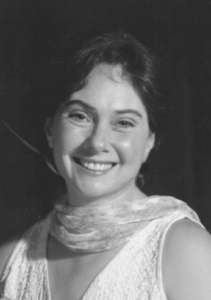 WATERVILLE – Roxann (St. Amand) Donahue, 71, has died.
WATERVILLE – Roxann (St. Amand) Donahue, 71, has died.
Her life was filled with joy: sharing laughter and good food with family and friends; happy times at Sibley Pond, in Canaan; Scrabble marathons; the blessed companionship of yoga and dance students; making art and music; dancing until she was all danced out.
Throughout her illness, she found a way to keep dancing.
She is survived by her husband, John Donahue, of Waterville; daughter, Sofia Chase, son-in-law George Chase, and granddaughter, Eliza Chase, of Edgecomb; daughter, Katrina Chasse, and her life partner, Ben Dow, of Winslow.
Roxann’s family will hold a private celebration of her life.
Donations in Roxann’s memory may be made to Maine Death with Dignity, PO Box 801, Wiscasset, ME 04578, or to the charity of your choice.
LINDA N. TRAVERS
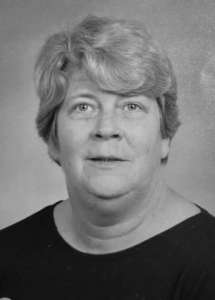 FREEDOM – Linda Noble Travers, 74, of Freedom, passed away peacefully on Saturday, March 30, 2024
FREEDOM – Linda Noble Travers, 74, of Freedom, passed away peacefully on Saturday, March 30, 2024
Linda was born in Fayetteville, North Carolina, on November 4, 1949, to John and Elsie Damren.
She spent her early years moving from one army base to another until her father retired to Maine. Linda then attended and graduated from Winthrop High School. She attended Plymouth State College and graduated with a degree in education. She went on to obtain a master’s degree in education and National Teachers Certification. Linda taught school in Massachusetts and Florida, touching many young lives with her care and dedication during her long career.
After retiring, Linda became a dedicated quilter, making beautiful quilts for family and friends. She was a lifelong lover of books and cats, both of which brought her great joy.
Linda was predeceased by her parents and husband, Thomas Travers.
She is survived by her children, Stacey Noble and her wife Carey Noble, Sabrina (Noble) Overlock and her husband Justin Overlock, and Steven Noble and his partner Drew Walker; her grandchildren, Kyle, Maeve, William, Tammy, and Revel; her twin brother John Damren and his wife Barbara Damren; sister Katherine Lewis and her husband Phil Lewis; brother David Hurst; niece Sara Fournier.
There will be no funeral services; however, a celebration of Linda’s life will take place at a later date.
In lieu of flowers, please consider a donation to the ASPCA (https://secure.aspca.org/donate/memorial, and use lindatraversmemorial@gmail.com as the recipient email).
